Greetings from another trip to the Tokyo Game Market! Happening twice a year in Tokyo, and supported by smaller events throughout the year, the Japanese board scene manifests shokunin in a wonderous way.
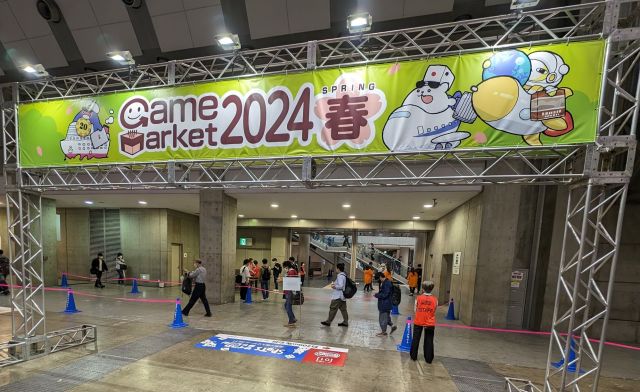
I’ve talked a lot about the show before, and the joy that is the catalog, so I’m dispatching with most of those pleasantries. Like the 14,000 people that attended on Saturday and 11,000 on Sunday, let’s go to Game Market!

The show is held at the Tokyo Big Sight convention center in Tokyo Bay – among a series of man made islands. While the water taxi directions remained in the catalog this season, that route to Big Sight has not resumed since the beginning of the pandemic, so your options to get there will involve feet or wheels (bus, car, or train).
The train and subway routes to and from aren’t the most efficient for places you might stay in Tokyo for other things you might want to do during a trip, so I tend to stay further out and have a longer to and fro on Saturday and Sunday.
What I hadn’t anticipated in choosing to take the bus is that the general isolation of the Odaiba area in the Bay means that the bus is also quite crowded! Here’s the line when the first bus at my stop near Ginza arrived on Saturday morning. We didn’t all make it on the bus.

I did make it on the next one – but we blew through the next 8 stops without being able to pick up a single passenger – and no one got off! We left a line of passengers at every bus stop along the way. Huh, I thought. Are all these people really going to Big Sight?
They were not. There were 5 of us by the time the bus arrived underground at the show.
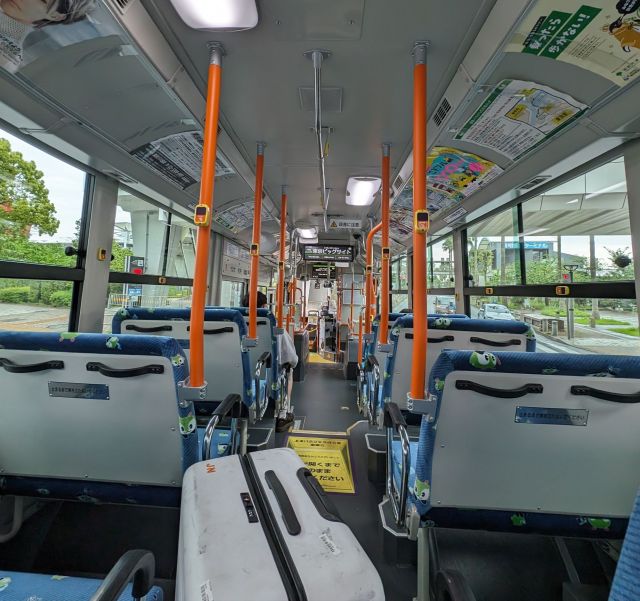
Speaking of bus stops, it was hot! I’ve been to the show in April, May, October, and December, and the weather is pretty consistently just a few degrees hotter than I’d like, but it felt even a few more than usual this time. I stopped by the Saashi & Saashi booth to say good morning, and Saashi had flyers for their new game that doubled as fans and it was a relief!
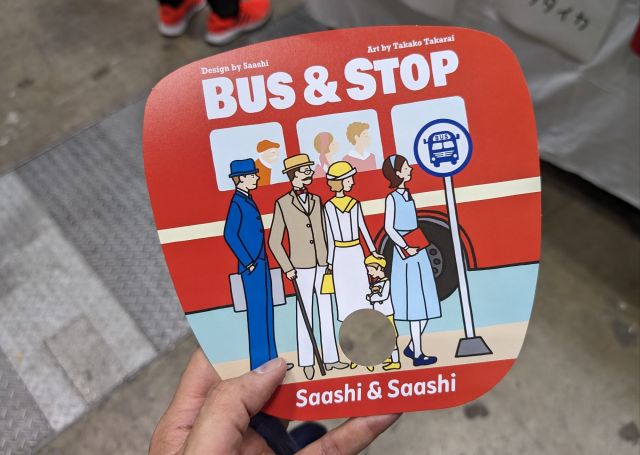
Speaking of which, I had a chance to play Bus & Stop a few days later! It’s a delightful set collection game where each turn you are either dropping off passengers or picking them up. You drop them off by destination (symbol), with larger groupings awarding you more points, but pick them up by their boarding stops (color). Your bus only has so much capacity, so balancing who fits and when you should drop them off makes a nice little game. If you like their other card games like Wind the Film or In Front of The Elevators, you’ll be at home here.
As for me, I’m home at Big Sight, but this could be the last time. In the fall, the shows moves to the Makuhari Messe, and won’t be in the Bay for the first time since 2013 – may I never get to take the boat?! I’ll miss the conference center that serves as the centerpiece of the campus. It looks like, well, a building in photos, but I stare, speechless, in person each time. It’s awe-inspiring in a most literal sense.
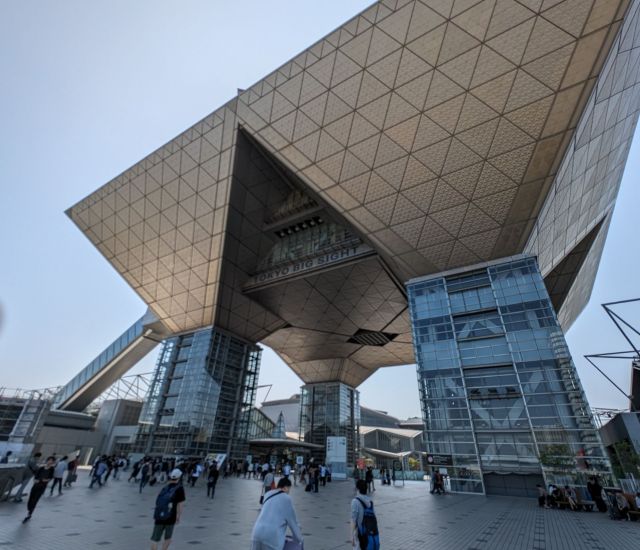
This time around, there was a Tokyo Big Sight Card Game! Haha, and the available copies were laid out as the Conference Center! I bought a copy, and in the game you’re also laying out cards in such a display. It ultimately is a variant of Fan Tan, a traditional game and one that usually sees two or three versions released each season.
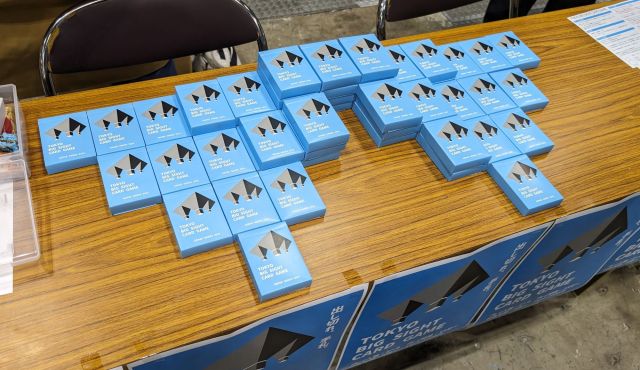
One of the others, more loosely, in that family was this calendar building game where cards are played in the same row or column as the previous player – I think? This game is one that I mark in blue on my map – it will be an orange highlighter next season – where I find minimal information online ahead of time and need to do research on sight. Often, there’s limited information I can gather from looking at the components, but taking a photo of those rules feels intrusive and a language barrier prevents much of the necessary rules explanation.
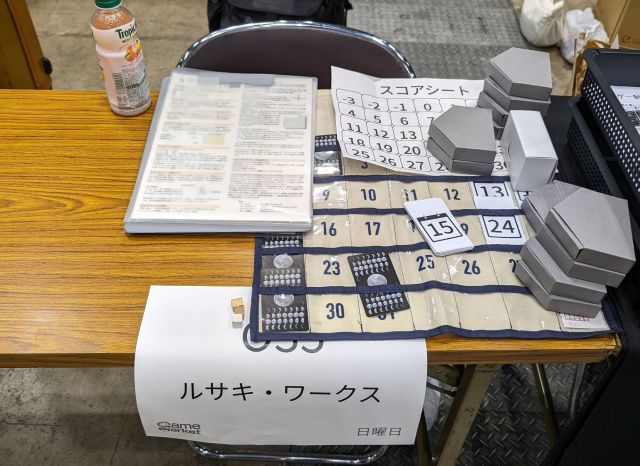
Here’s another of the blue/orange titles that required live research. Anone is a game about laying out scenes and filling in the details that the panels create. We each create a story independently, and then compare how our stories were different and how they were similar.
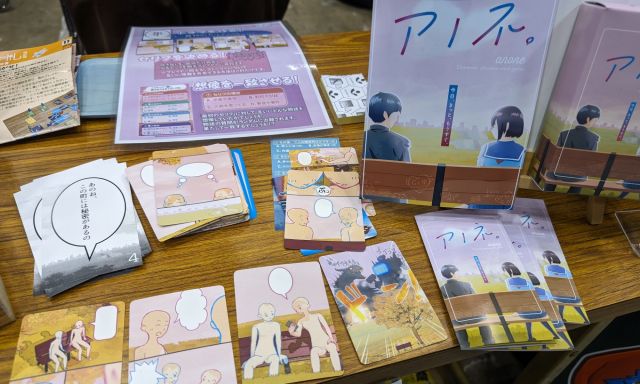
What was I talking about? Ah yes, Big Sight! A few things were new this season. We’ll talk about them throughout, but one was this precious kids’ play area. There were around 3 of these in this part of the hall.
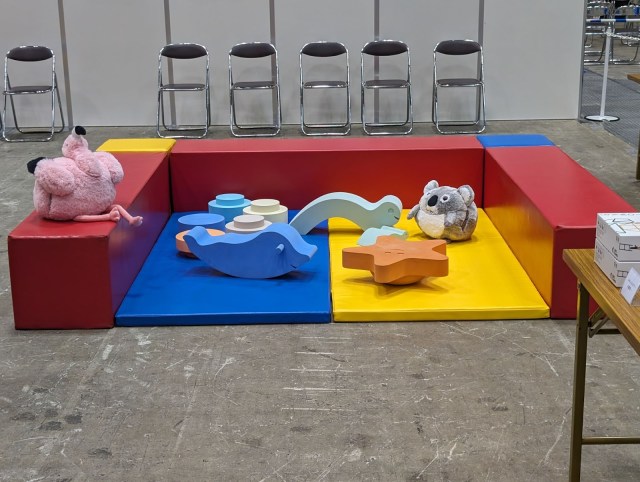
A true joy for me are the hyper-local games. Here are two based on a local dental clinic’s billboards. As of 2022, there were approximately 340 such signs around the region, according to one article I read. A local model train company also makes a scale version of it that you can put in your basement layouts – they noted that they contacted the dental clinic who immediately gave them permission to reproduce it. There are gachapons of the sign.
Both of the games appear to be memory games where the signs are only slightly different from each other -a common genre in Japan.
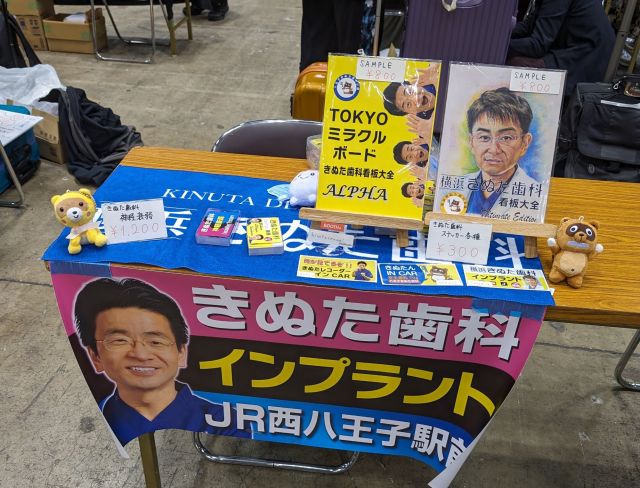
Let’s keep walking around, what do we see….a nice stack of The Fuzzies in it’s new Japanese edition! Despite the celebratory clapping at the end of each session, playing games in Japan is generally a quieter affair than in America – so a stacking game that falls silently is a nice fit!
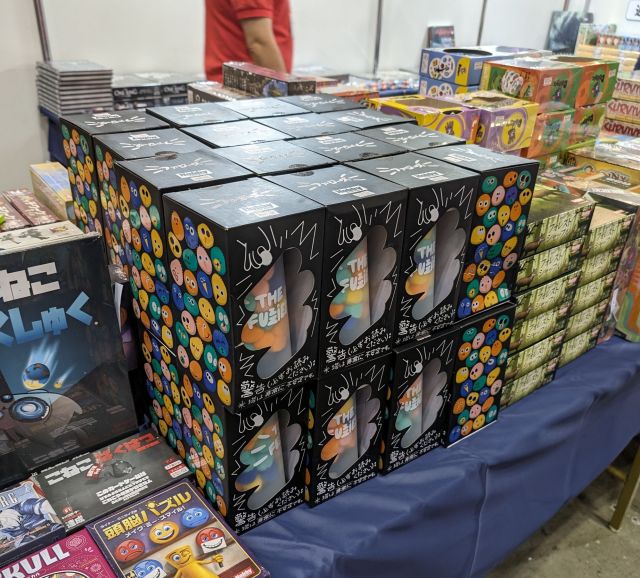
Disclosure time! These trips to Japan are work trips of course. Sure, sometimes you get an OpioninatedGamers post summarizing (some of) what I saw and bought and played, but that’s a tiny part of my trip that can often be handled at 30,000 feet on the return flight. Shepherding along localizations of our games is a piece of my job (CMYK!), so I take a special delight in seeing that stack of The Fuzzies in Japanese or the people that also bought Wavelength from the Hobby Japan booth.
Of course, localizations of our games weren’t the only Western games making premieres at the show – I saw long lines for a booth with copies of Shipyard and Evacuation. But the one I want to talk about is Mister Diamond – a 30 year old game from Gunter Baars and Ravensburger, with its first edition this century – a co-publish between Jelly Jelly Games and Hanayama, better known to me as the manufacturer of metal handheld puzzles.
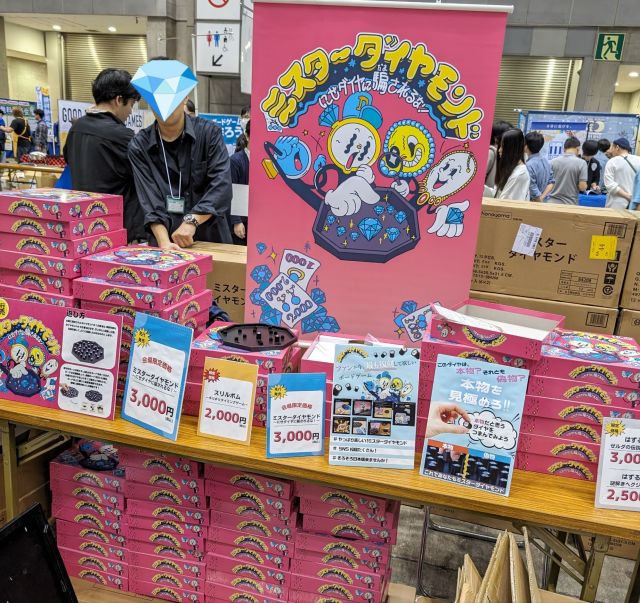
The game will have a wider release (e.g. Amazon Japan) in June, but limited copies were available at the show. I had a chance to play it the day before, and again a few days after, and it felt like a true discovery – where had this game been for the last few decades! How had it not crossed my radar in a meaningful way?
In the game, this central black octogan begins with around a 60/40 split of cylinders, atopped with diamonds, which can be removed or cannot. There is a market of three cards worth various amounts – 1000, 2000, or 3000 – and a matching number of blanks – 1, 2, or 3. On your turn, try to remove one. If you are successful – great! Put it on a card in the market. If you’ve completed a card, take it, and the next player takes their turn. If, on the other hand, you’ve placed the first marker on a 3000, then go again! If your success continues, place that next one on the 3000 too. If, however, you fail – it is the next player’s turn and whatever you’ve placed on a card in the market remains there!
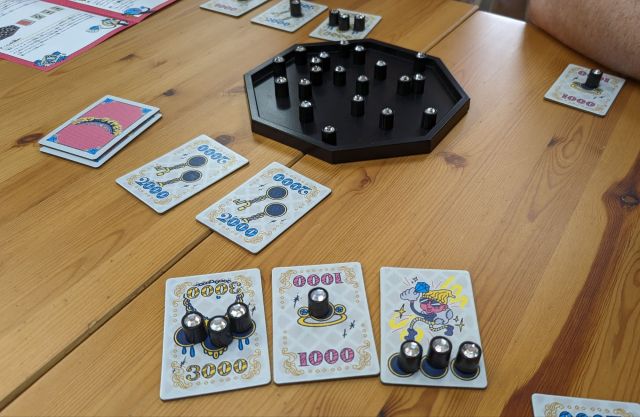
It’s an astonishing production – you simply cannot visually spot the difference between the removable ones and the permanents. The game’s system ensures that the tension is constantly ratched up as play progresses – with the ratio getting worse and worse as you remove the removables.
The game has multiple “match points” in a way that is rare in board games and has caused reflexive knuckle biting in each of my sessions.
There were a few reprints on display at the Korokoro-do booth – one, milkuro, was shown at their Essen booth on a flyer, but here was a mockup copy – a new edition of Trick-taking in Black & White. The other Conic, is a Reiner Knizia game, and you might have a few candidates for what it could be from the looks of it, but they confirmed that it is a new edition of Catena. Both “coming soon”!
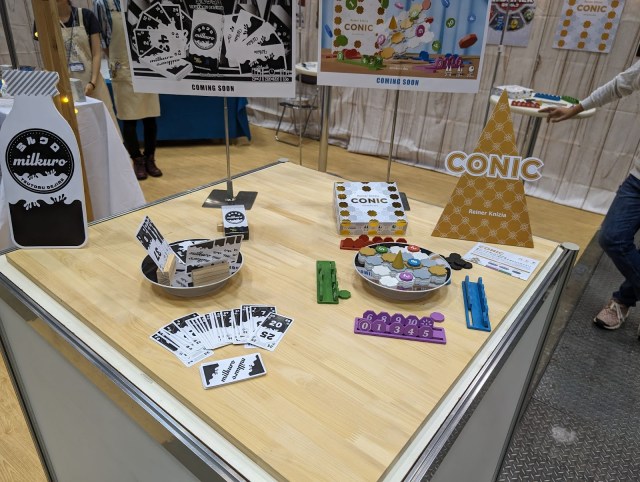
There were a few other upcoming games being teased or shown in one way or another – Friedemann Friese even showed the audience some prototype boards for upcoming releases during his talk on Saturday!
While picking up some games at the analog lunchbox booth, I noticed a prototype of an upcoming release, Aircrops, that will be on Kickstarter soon. What I had missed was that they announced a new spin-off, Retronik, in January which will skew heavier than analog lunchbox or Polar Pond, with Aircrops being their first release.
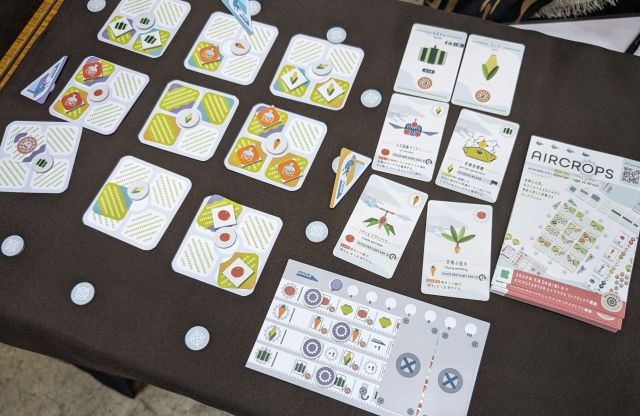
Another publisher decloaking from a Japanese industry veteran is Keiji Kariya’s Harvest Valley. While he was at Arclight, he ran Game Market from around 2013 until the pandemic and has started a new publisher – Harvest Valley. Their first game is out now, Divee!, a sort of Yahtzee variant. A flyer available at the Okazu and Hammerworks booth indicated that Harvest Valley will be publishing a new version of Space Investors, a game from the designer of Baronda and Nanatoridori, with further developmenrt, and a new title from Hisashi Hayashi, “The Zheng He treasure ship” on Kickstarter in June.
There are usually a few of the more indie titles whose coming soon catches my eye, and this time it was this wood burnt gear contraption. Can’t wait to learn more about this spirographic board.
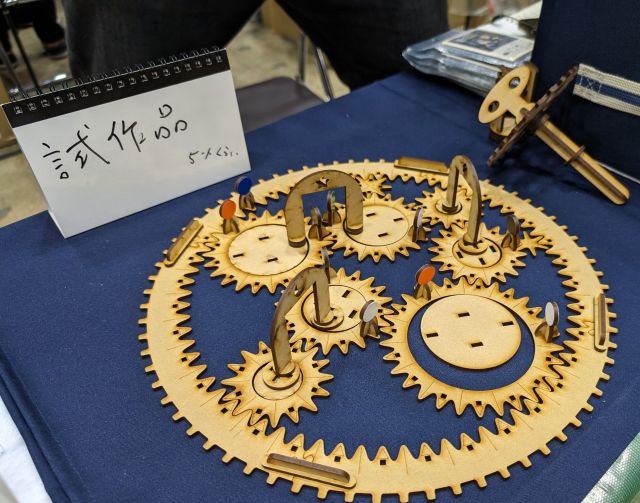
As I’ve mentioned, the fall Tokyo Game Market will not be at Tokyo Big Sight. They’ve cited a number of reasons for this – such as upcoming construction, potential hotel collaborations, and the only available weekend being the same one as Essen. The new location is up around the northeast corner of Tokyo, as you head out of the city and into Chiba.
There was a lot of sound and fury around recent acquisitions in the immediate day and hours leading up to the event. CMON had acquired Japon Brand – though they had hired TAK in 2022 and the companies co-hosted their typical Friday showcase for foreign publishers in fall 2023, with CMON also haing a prominent presence at the one I went to in fall 2022.
Western publishers had booths! Stephanie from the Washington Secretary of State’s office had reached out last fall about them having a booth at Tokyo Game Market. As they’ll point out, being the home of Wizards of the Coast and Pokemon makes Washington, economically, a large home of the greater gaming hobby.

They were there as part of the Tabletop Game Alliance booth, but others had booths too – ThunderGryph, Arcane Wonders, Japanime, even GAMA. Arclight had created a special booth type for these folks, and they were some of the largest booths in the space.
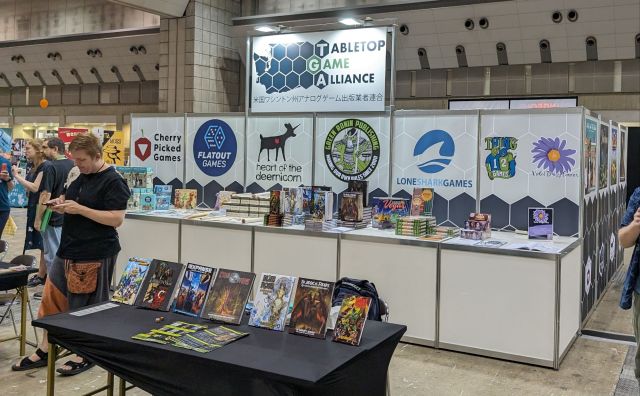
While I don’t recall it being specifically listed as a benefit for having one of these booths, Arclight also hosted a special Friday event for some Japanese designers to pitch their games to these publishers.
Oh, and Arclight was purchased. The company has two main branches – the convention and the publisher. From the press release issued by their new parent, Kadokawa, it feels like there is interest in leveraging the publishing side of Arclight to put out games based on IPs owned by Kadokawa. Time will tell.
As with the last few items, Arclight’s acquisition feels more like a thing that has happened and is to be obligatorily discussed rather than something that effects the day to day of game creators, buyers, or players.
The convention itself has, naturally, been continuously evolving. Some is the continued slow restoration of pre-pandemic activities – such as a food court of sorts where there were banks of tables and chairs and food trucks brought in.
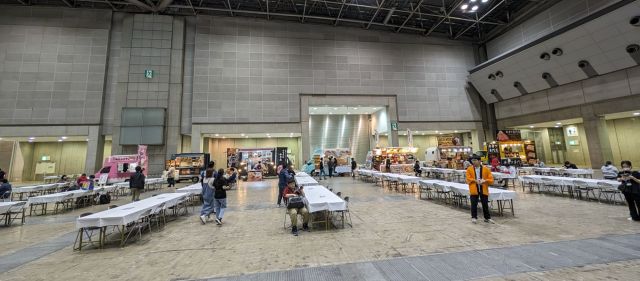
I had lunch there on Saturday and it was fine. On Sunday, I had lunch upstairs in the Big Sight food court and enjoyed that more. Also, what a steal – the meal below cost me $9.98!

In addition to those empty tables above, there was a more concerted effort to have open play areas. Below is one of two such corrals available on Sunday. They were in pretty constant use throughout the day and hard to find space at.
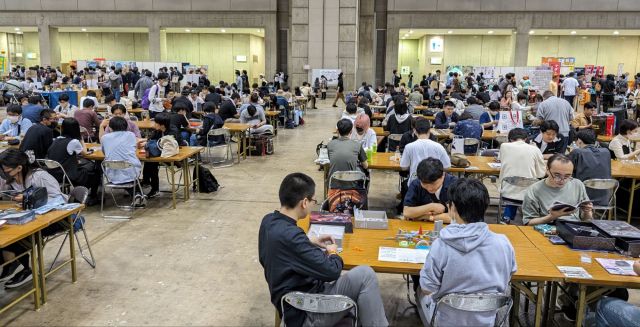
There was also sanctioned open gaming in the ballrom of a nearby hotel on Saturday night – recall that one of the stated features of moving the show in the fall is further hotel collaborations. From what I’ve talked with folks, there were some teething pains around queuing rules and capacity restrictions, but that lessened as the night went on. It’ll be interesting to see how this event evolves at the new space – as Tokyo specific geography things feel like they make this difficult in the current location.
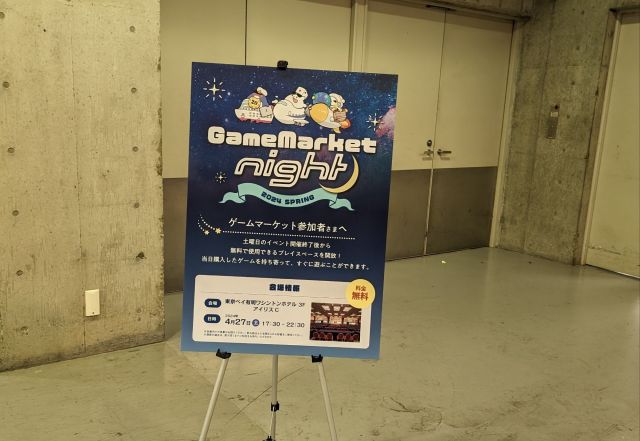
Let’s look at some other crowds. I mentioned localizations before, and as a Westerner who attends for the Japaniese indie games, it’s easy to forget what will have the biggest lines on Saturday: the booths with the Japanese localizations of hit Western games! Hits are hits. I watched on Sunday as when the 11:00 early entrants game in, only two people rushed to the booth I was most worried would run out of the reservation-less game I wanted. Meanwhile, here’s a blurry pictures of throngs of people in the RPG area – the area with the biggest lines on Sundays.
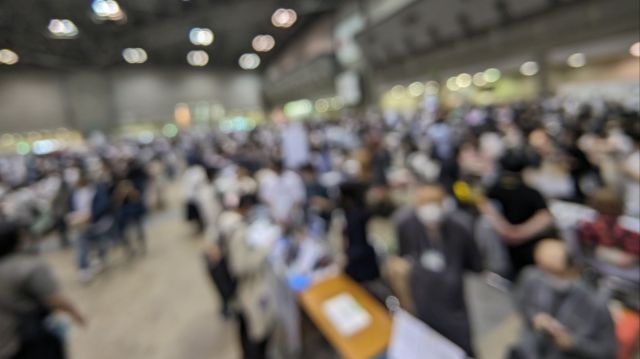
Where had big lines on Saturday? Well, the Arclight booth, as it usually does. They often have updated and larger print runs of Japanese indie games as well as localizations of Western games. Here’s what it looked like there shortly after 11 on Saturday. What was everybody in line for?
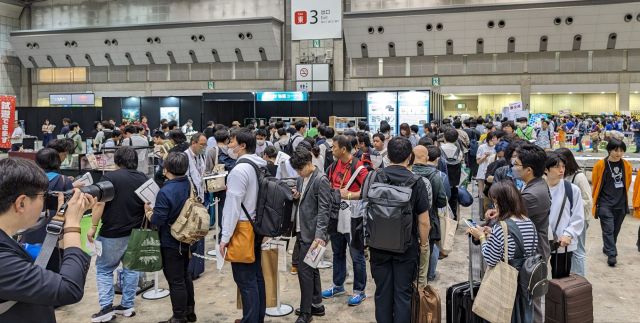
Spots of course! Haha, OK, also Phantom Ink, but I was especially proud to see Spots have such presence (CMYK!) – soon available in 14 languages! (Update – Got a 15th confirmed between drafting that sentence and hitting post!)
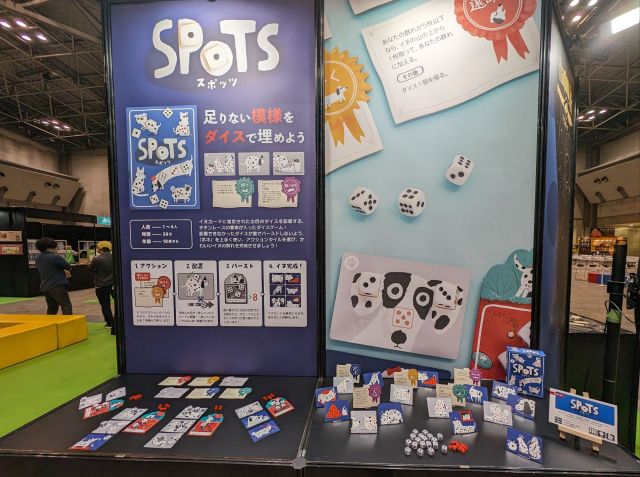
What sort of booths didn’t have lines? (This is a new way to describe some of my favorite booths which has just occurred to me.) These are the booths I want to proselytize about, as another Game Market passed with too few people in line to buy Quipu each time I passed. (I love that game!)
Let’s talk about WAZA’s copier first. This company first came across my radar last fall with a roll and write game about your life as a baseball scout, traveling the country looking for prospects. Their booth this time was one of the larger types, and was mostly this copier.
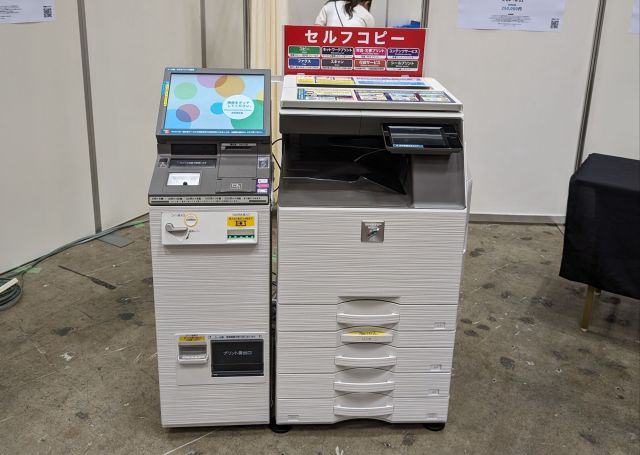
I’ll explain. Copiers do a lot of heavy lifting in Japan, as you can go into a convenience store and use them to buy tickets to events and a variety of other non-copying tasks. A few months ago, WAZA had announced a deal where you would be able to buy the baseball scout game from copy machines across the country – in more than 30,000 stores – in a print on demand model! Put in 500 yen (around $3 USD) and get a copy of the game!
Their booth brought that to life – with 5 games being available. You paid 500 yen and got to print a game! Here’s the one I picked up.
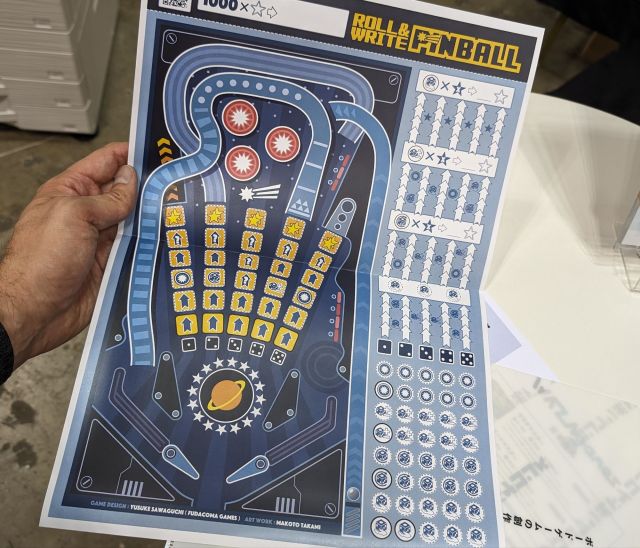
Another booth I passed which rarely had a line was Odomatope. This game is a charades variant where each of the things you must act out is an onamonapeia. That seems fun enough, but I think what would make it a joy is hearing the cacophony of guesses, as the other players are making this sound and that noise.
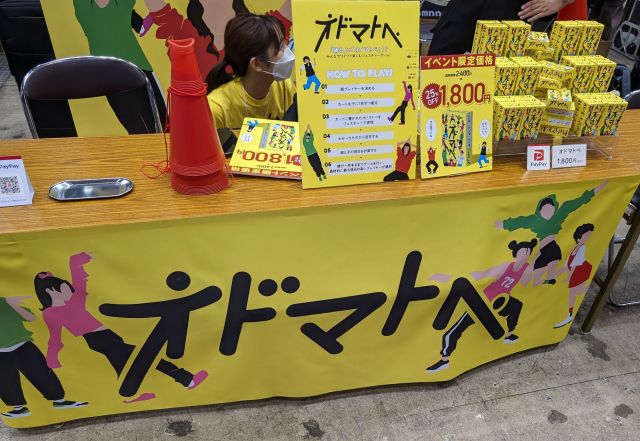
One booth I stopped by a few times never had a line, but it also, mostly, didn’t have staff! There was an open metal briefcase, filled with the games for sale, showing a QR code to the publisher/desginer’s PayPay account (a Japanese P2P payment system, not available to folks outside of Japan), and they had crossed out their booth name on the booth’s label and handwritten that it was the games’ “unmanned sales office”. I’ll add that I did stop by early enough in the day to talk to someone at the booth, as I was excited to finally see these games, but they told me they wouldn’t take cash: PayPay only!
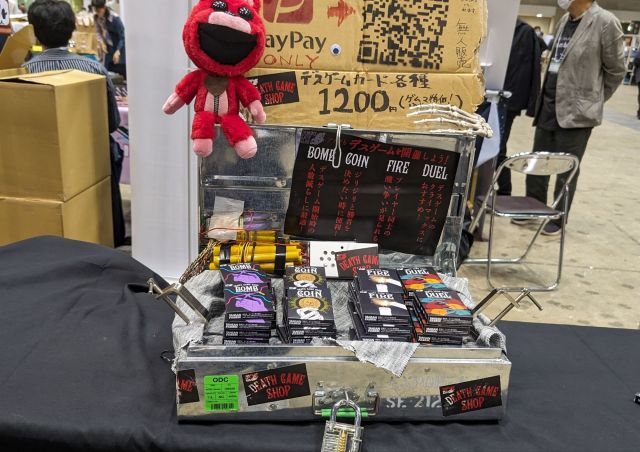
Let’s check in on that Spots line… Sold out! No more line.
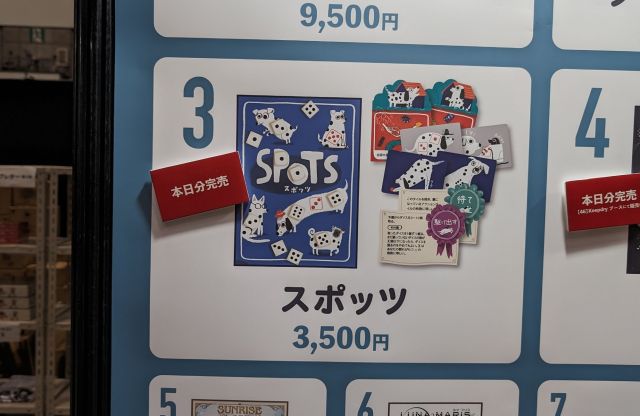
There were a few dexterity games whose availability to purchase highlights for me why Game Market is so special. Wings, Inc. has you lowering velcro covered bandits through a grid of laser velcro strips, stealing some kind of things you steal from the bottom of this box.
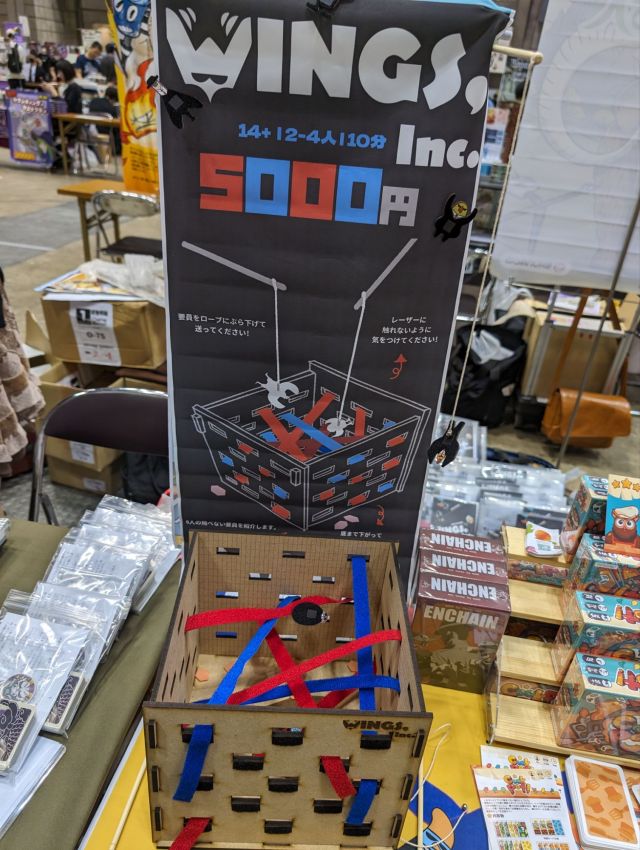
In The Space Cokuri, players are using these long knitting needles, to push this clear disc, piled high like a pick up truck collecting pallets, across the table – thematically, you are colonizing mars. There are bonus points for collecting certain objects on your way, and one of you could be a saboteur.

It’s such a joy to me that these designers offer their creations like this to whomever wants to part with some of their ducats. It’s an achievement to design a game and create a prototype like this, but crafting a few copies for sale – 50? 20? Even 5? Maybe it’s never available again? What a treat! What a glorious opportunity to get to play what each person has brought to life and wants to share with us.
Sometimes, that’s the only chance to acquire some of the quirkier titles, but sometime a hero republishes one of them. This season, ForGames reprinted Chikasuzu’s 2017 release, Janken No Border. The original game, for 2 players only, has a deck of cards 1 through 16, and the players compete in 5 sequential games of rock paper scissors, from a 7 card hand. That is, we each choose a card, reveal simultaneously, and set them on the table. Then, do that 4 more times. Whomever wins more rounds wins the hand, and you want to win the best 2 out of 3.
But, take a look at the cards below. What is the 12? The 4? Are those rock? Paper? Scissors? Well, this is where the joy of the game comes in – it is undefined! From your hand of 7 cards, you’ve played 5, and the remaining 2 will determine your ranges. In the setup below, you’ve kept 1 and 15; unfortunately, the yellow player aid cards are backwards here, but any of your cards higher than a 15 are paper, lower than 1 are rock, and in-between are scissors. For our opponent, anything greater than 9 is paper, less than 5 is rock, and 6, 7, 8 are paper. So clever! The new version also supports 3 and 4 players.
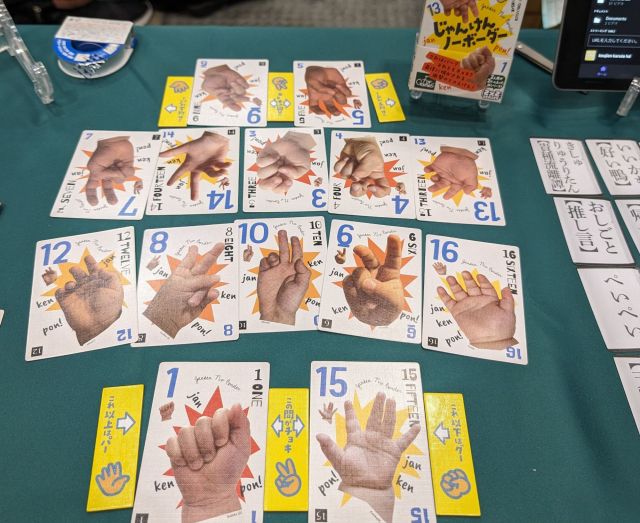
I don’t recall picking up any non-games this year, but there are usually a few puzzle or accessory stands which catch my eye. This year a puzzle booth had these puzzles that I’m not sure the name of – where you have 7 or 8 pieces that are painfully similar and you need to jigsaw them back into their frame. Usually these are 2D affairs, but this company has made 3D plastic versions based on Japanese foodstuffs.
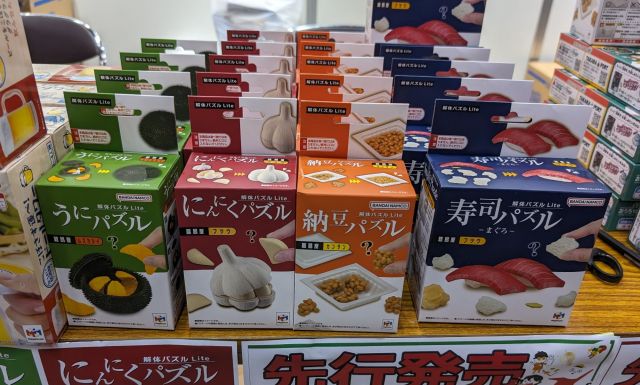
This booth, in thematic support of their farming game, was selling produce as if it was a farmer’s market stall!
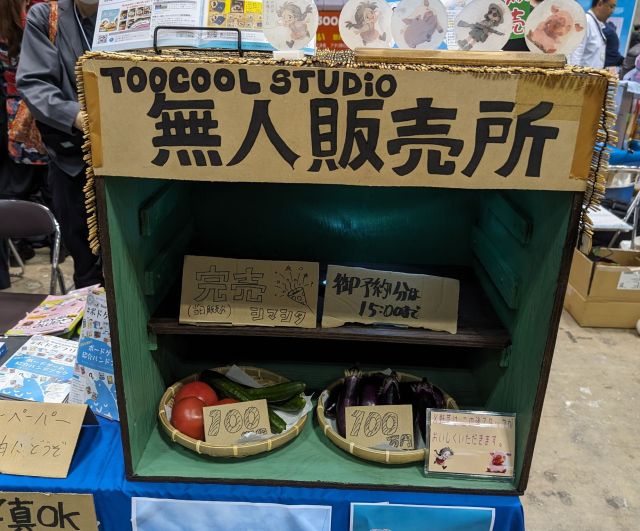
A brief @OpinionatedEaters break here to say that my favorite ice cream bar I had this trip was this pink graprefruit one that I grabbed at 7-11. I had their honeydew later, and it was fine. I had an animal cracker one that I sorta regret. But this one. Yummo.
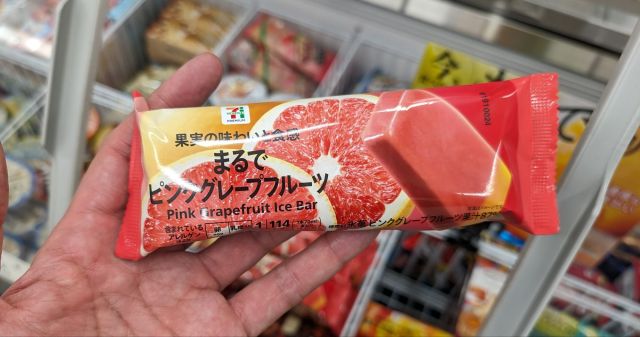
Oh, let’s talk about one other line. On Sunday I took the train in, fearing being among these crowded buses like the day before – but it was more crowded that I was expecting too. Maybe that’s just the level of tourism Japan has regained. Maybe they’ll be getting off at other stops, like my bus co-riders.
But they didn’t. They all streamed into Tokyo Big Sight! Hmm, this is quite odd. What could be happening. They went in the same door as me. Down the same corridors. Making the same turns. Using the same escalators. Uhhhhh.
Then I saw it. Across from Game Market Sunday morning was the Yu-Gi-Oh! Championship Series. And not just that. They were over there setting world records with it!
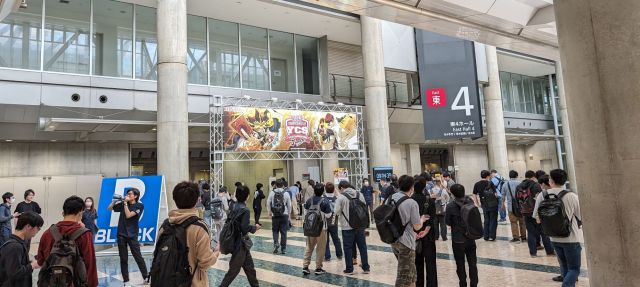
Some booths had other types of crowds. Here, a film crew is interviewing my friend Yuto about his game Gum Talk. There are a few genres of analog games in Japan that don’t quite exist in the West; Gum Talk exists in a category that we’d refer to as ice breakers. Due to various cultural factors, conversation prompt games are a hit in Japan. Each season Yuto seems to have a new pack of topics – sometimes dispensed in a vintage gum machine. It’s a game celebrities play on TV in Japan. This season he had two new packs – one of them, an English pack for the first time! I’m excited to try it out.
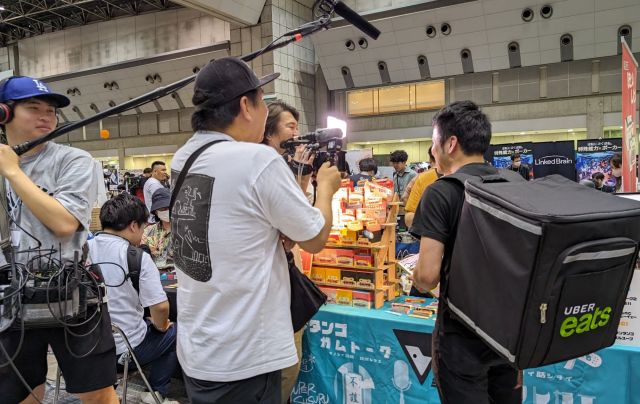
A bit more technically produced than some of the games, was Onkan. The game consists of an app and this set of NFC enabled cards. From the Japanese karuta genre, these games are variants on flash cards you might study; the one we tried had the app play a tone and you needed to pick out which note had been played! Wowzers!
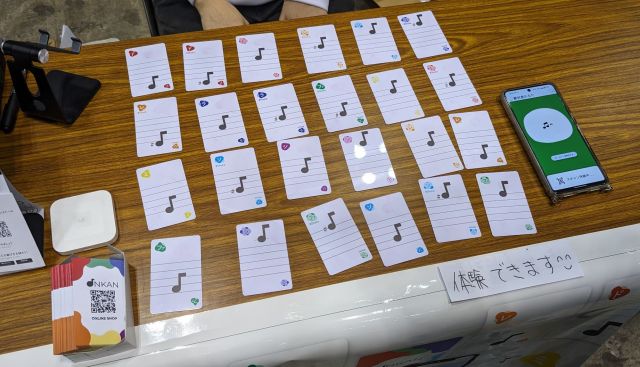
That’s it for this dispatch! I like to type down what happened as a sort of diary and travelog for my future self – which is your caveat that while I’ve talked a lot about different bits here and there, I haven’t talked much about what I bought and there’s only select first impressions.
The Tokyo Game Market is a true delight, and a fairly singular board game industry experience. I want you to get a feeling for the passion and sense of excitement I have for the event – but will leave so many of joys for you to uncover yourself.
I hope you can make it some time.
best,
James Nathan
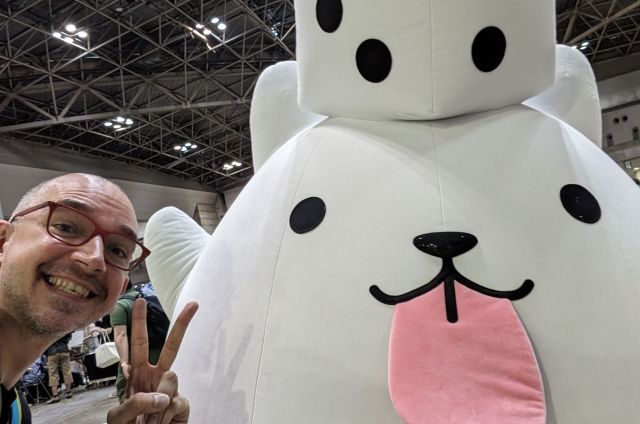

Everyone loves Mr. Diamond in my extended family. I bought multiple copies years ago to make sure that every family group had a copy to play. With grandkids now starting to enter the picture, it will undoubtedly have a renaissance around here.
Omg the wooden cogs one looks fascinating!!
Hello, how much is the entrance fee for the Tokyo Game Market?
Around USD $20 for “early” admission (11 AM) and around $10 for regular (12 PM)
Love the WAZA P&Ps. How cool is that? Imagine that across the world. Like an analogue version of an App Store.
Awesome writeup, James! Thanks for sharing your experience with us.
— Adam Sequoyah in Kansas City
So. After 20 years of non-stop Spiel in Essen it’s time for this Swede to finally go to the Tokyo Game Market.
Spring 2025 is the plan but my Google-Fu seems weak.
Tried translating more or less the whole Game Market Website without any joy.
I can see that the Spring Market mostly is in the middle or late April, but early May has also happened.
So. You wouldn’t know if the dates for Tokyo Games Market spring 2025 have been announced? And if so? When ;)
Hey! That’s a good question. Sometimes they announce the date 7 or 8 months before hand and sometimes it feels like 4 or 5. It can make it tricky to plan a trip. No dates announced for Spring 25 yet.
Thanks.
I’ll continue to keep my eyes open. Cash at the ready. Ready to book flights and hotel :)